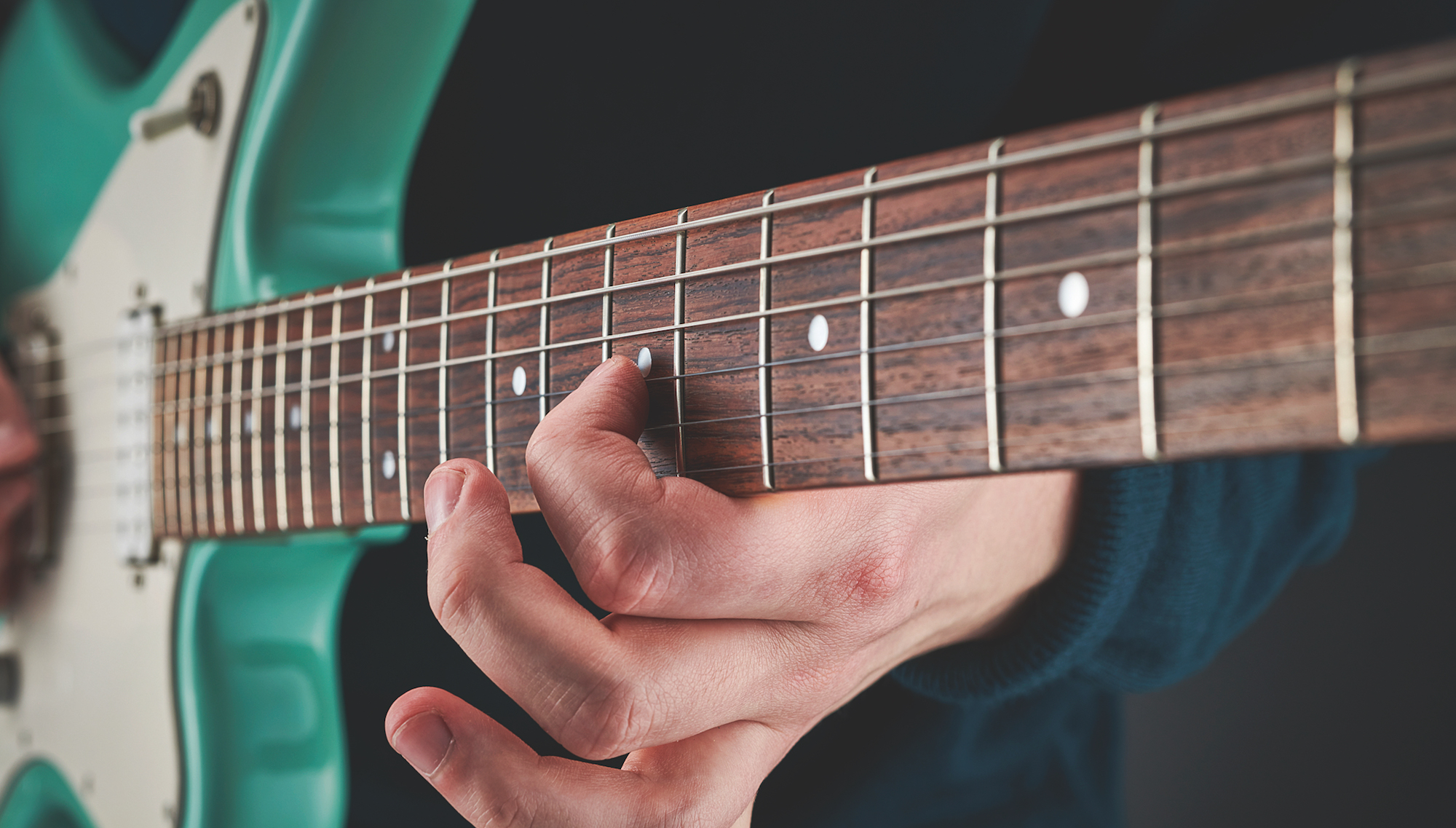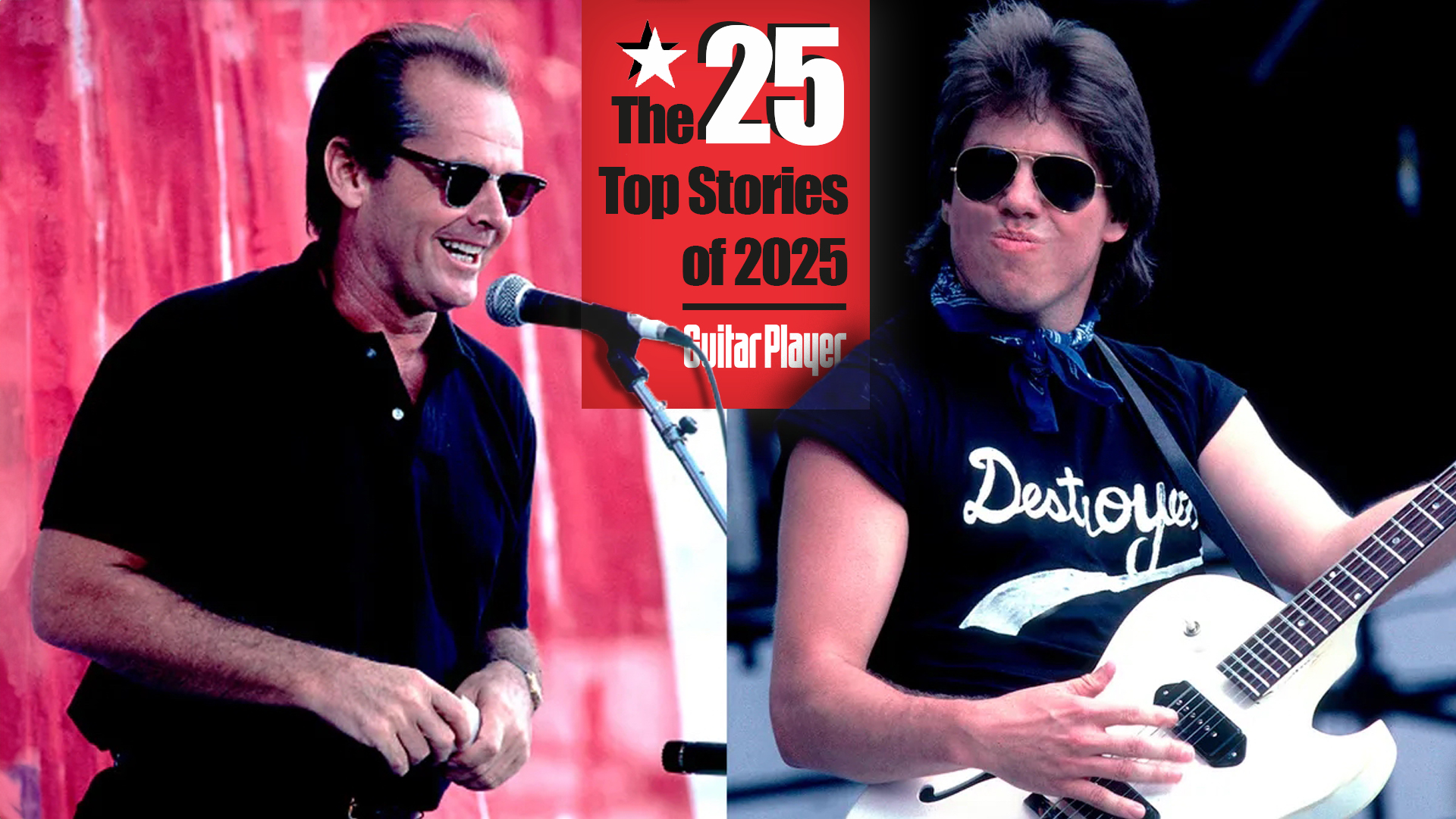A Few Useful Tricks with Minor Scales
How to handle situations that call for the harmonic minor and melodic minor scales.

Besides the always-useful pentatonic scales, most of us use major, minor, and dominant scales to navigate through chord changes. And I’m sure quite a few of you know your modes and when to use Dorian (for the IIm7 chord) or Aeolian (for the VIm7 chord). But I have a few tricks that I pull out for special situations that call for the harmonic minor and the melodic minor.
First let’s look at the harmonic minor scale. It’s a strange-sounding scale on its own, sounding like this: root, 2, minor 3, 4, 5, minor 6, major 7, and back to the root. That jump from the minor 6 to the major 7 is what makes it sound unique and different to western ears.
Using a minor scale on a dominant chord is nothing new, but this particular application was mind blowing for me
When I use it on a straight minor chord, it bugs me, as I prefer to use the bluesy minor 7 instead of the major 7. But, years ago, when asked to play Gypsy jazz for the film LA Story, I checked out Django Reinhardt extensively.
It was then that I realized the secret: He uses the harmonic minor on the dominant chord when going to a minor I chord. A minor scale over a dominant 7th chord? Django probably didn’t think of it that way, he just heard it. But the upper-structure tensions needed to swing in that style are contained in the harmonic minor.
Using a minor scale on a dominant chord is nothing new, but this particular application was mind blowing for me. Here’s how it works.
For a progression such as A7#5 to Dm, you can use D harmonic minor over the bar of A7. Until it became second nature to me, I would simply relate the V7 to the Im chord, and play that harmonic minor over the V7 chord.
By playing D harmonic minor over the A7, you get all the right altered tones: #5, b7, and b9. Now, I use this device any time I see a 7#5 chord by simply relating it to the Im chord – even if it doesn’t resolve.
All the latest guitar news, interviews, lessons, reviews, deals and more, direct to your inbox!
An example would be the F#7#5 chord in bar five of the blowing changes in Chick Corea’s “Spain.” He doesn’t resolve to a Bm as in V7 to Im. Instead, he follows with Em7. But I still play B harmonic minor over that F#7#5 chord.
Once again, the necessary tensions are contained in the harmonic minor scale when played over that 7#5 chord, and anyone who has improvised over the “Spain” changes knows a straight Mixolydian scale doesn’t work.
Another trick I use involves the melodic minor. My friends – and great jazz players – John Stowell and Pat Kelley use this scale extensively with many applications, but I have one favorite.
For a dominant 7 chord, I like to use the melodic minor a fourth lower. For E7 – especially when it follows a D major chord – try playing B melodic minor. The scale goes: root, 2, minor 3, 4, 5, major 6, major 7, root.
It’s simply a major scale with a minor 3rd. But applied to a dominant chord, you get the Mixolydian mode with a #4, and that one little altered tone is so refreshing in a solo. This is also described as a Lydian Dominant scale, perfect for accenting that b5 dissonance.
Practice these applications until you no longer need to extrapolate a fourth or a fifth away, and they will become what you naturally hear and play.
